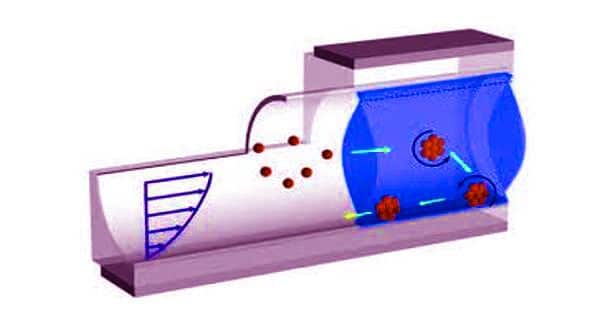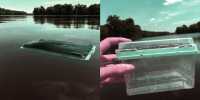Scientists have succeeded in propelling microvehicles toward ultrasound fluid movement. These tiny vehicles are expected to be integrated into the human bloodstream in the future, thus revolutionizing the field of medicine. At some point, microvehicles that are small enough to navigate our blood vessels would allow doctors to take biopsies, implant stents, and administer medications precisely to locations that are difficult to access, all from within the body.
ETH researchers are among the first scientists to have succeeded in propelling micro vehicles against a fluid flow using ultrasound. In the future, these tiny vehicles are set to be introduced into the human bloodstream, thereby revolutionizing the field of medicine.
Scientists around the world are actively studying and designing appropriate microvehicles. In most cases, acoustic and magnetic fields or light are driven and controlled. However, to date, the propulsion of microvehicles toward fluid flow has proven to be a major challenge. This would be important if micromachines were to be able to navigate the path of blood flow in the blood vessels. Researchers at ETH Zurich have now created micro-vehicles that are manipulated by an external field and can swim against the tide.
In their laboratory experiment, the research team led by Daniel Ahmed and Bradley Nelson, professors at the Department of Mechanical and Process Engineering at ETH Zurich, used magnetic beads made of iron oxide and polymer with a diameter of 3 micrometres. The magnetic field causes these particles to aggregate into a colony with a diameter of between 15 and 40 micrometers. The scientists observed the behavior of this swarm in a thin glass tube with liquid running into it. The glass tubes had a diameter of between 150 and 300 micrometres, comparable in scale to the blood vessels in the tumor.
In order to propel the microswarm toward the flow in the tunnel, the ETH researchers used the same trick canoeists on the water: they embraced the river bank to swim upstream, since the pressure of the bank makes the current there sluggish than in the center of the river.
Using ultrasound at a particular frequency, the scientists first led the cluster of microbeads along the wall of the tunnel. The researchers then turned to a spinning magnetic field to propel the swarm toward the flow. As their next move, the researchers aim to examine how microvehicles react in the blood vessels of animals. “As both ultrasound waves and magnetic fields penetrate body tissue, our method is ideal for controlling microvehicles inside the body,” says ETH Professor Ahmed.
Microsurgery, such as unclogging closed blood channels, is one of the potential uses that researchers hope this approach can support. In addition, microvehicles could one day be used to deliver cancer drugs to tumors through the blood vessels and release them directly into the tumor tissue. Finally, another area of application is the movement of medicines from blood vessels to brain tissues.
















